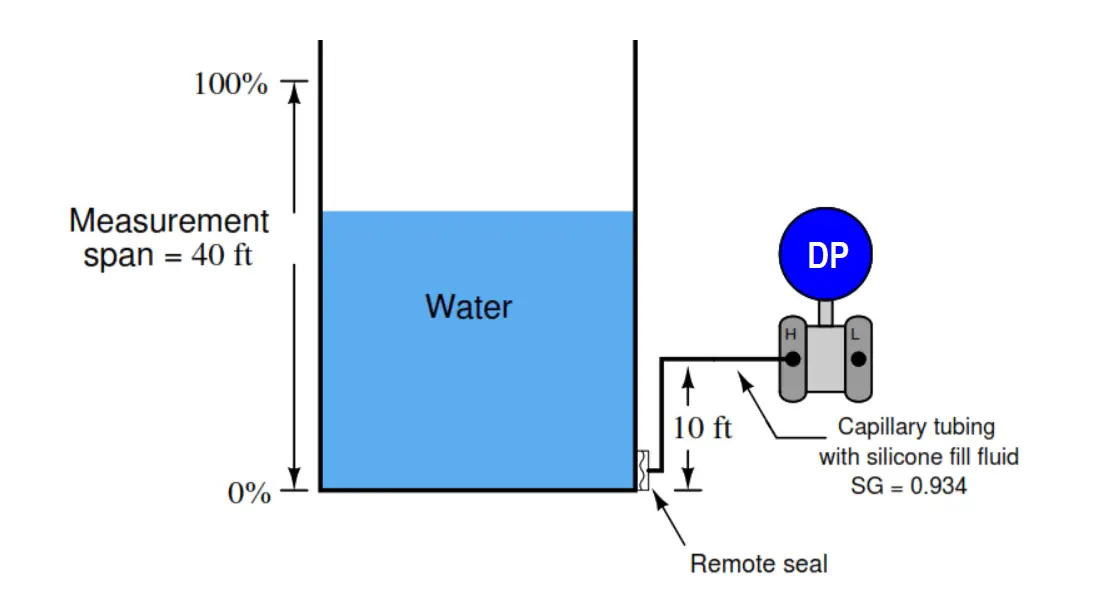Determine the LRV and URV points for a transmitter measuring water level in this vessel, with the DP transmitter elevated 10 feet above the vessel bottom and connected to it with capillary tubing and a remote seal filled with silicone fill fluid (SG = 0.934).

Also, explain why a remote seal is absolutely necessary in this installation. It would not be a good idea to simply connect the “high” port of the ∆P transmitter to the bottom of the vessel with a length of tubing as is permissible when the transmitter is either level with the bottom of the vessel or suppressed below the vessel’s bottom!
Be sure to show all your mathematical work so that your instructor will be able to check the conceptual validity of your technique(s).
A good way to check to see if you’re solving the problem correctly is to check that each and every one of your intermediate calculations (i.e. the results you get mid-way during the process to arrive at the final answer) has real physical meaning.
If you truly understand what you are doing, you will be able to identify the correct unit of measurement for every intermediate result and also be able to show where that number applies to the scenario at hand.
More Questions
1. Demonstrate how to estimate numerical answers for this problem without using a calculator.
2. When calculating hydrostatic pressures, there are two common methods: one is to use the formula P = γh and another is to translate inches of vertical liquid height directly into PSI using the known relationship between water and PSI (1 PSI = 27.68 inches of water). Demonstrate both methods applied to this problem.
3. A good problem-solving technique is to imagine (perform a “thought experiment”) the converse of a given question. Here, you were asked to explain why a remote seal is necessary. Present a thought experiment where you envision the opposite condition (e.g. the lack of a remote seal), and explain how this might help you to answer the initial question.
4. Should the “low” side of the DP transmitter be vented or sealed?
Share your answers and explanation with us through the below comments section.
Read Next:
Credits: Tony R. Kuphaldt
Lube oil consoles of rotary equipment packages in industrial process plants are usually equipped with…
Rotating equipment packages such as pumps, compressors, turbines need the lube oil consoles for their…
This article explains how to blink lights in ladder logic with a detailed explanation video…
In this article, a simple example will teach you the conversion from Boolean algebra to…
In this article, you will learn the PLC cooking timer example for kitchen automation using…
Learn an example PLC program to control a pump based on level sensors using ladder…